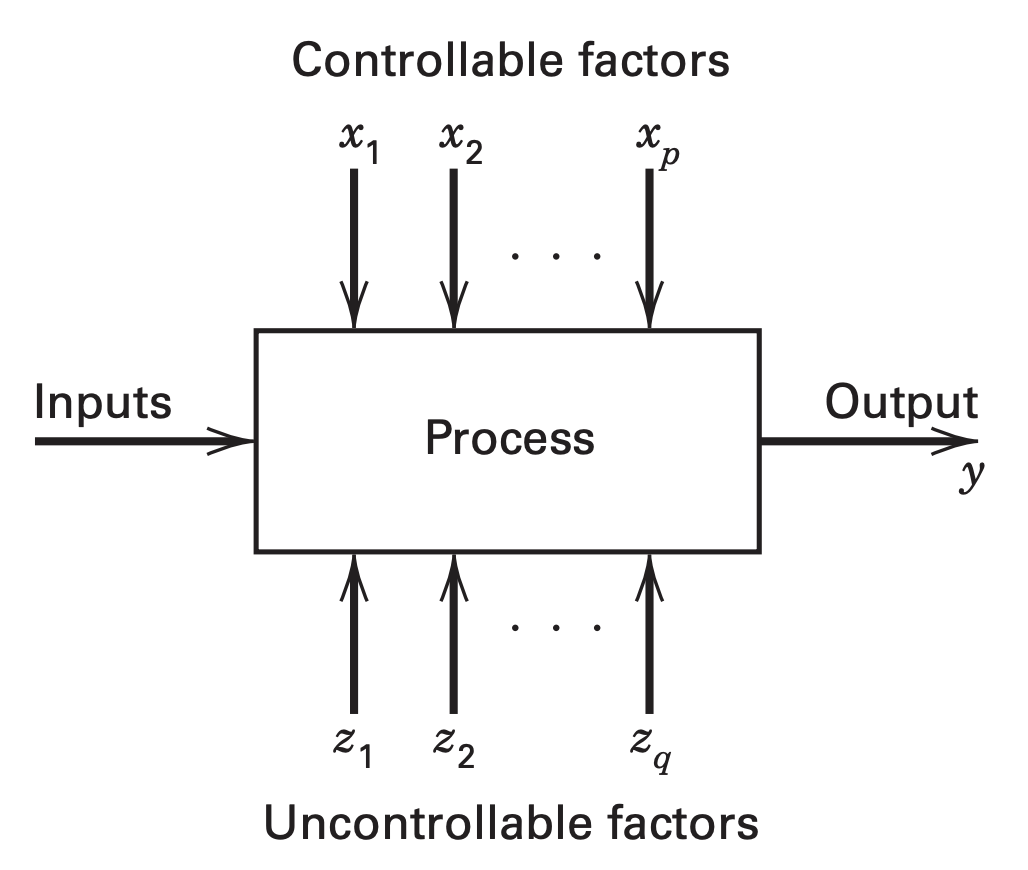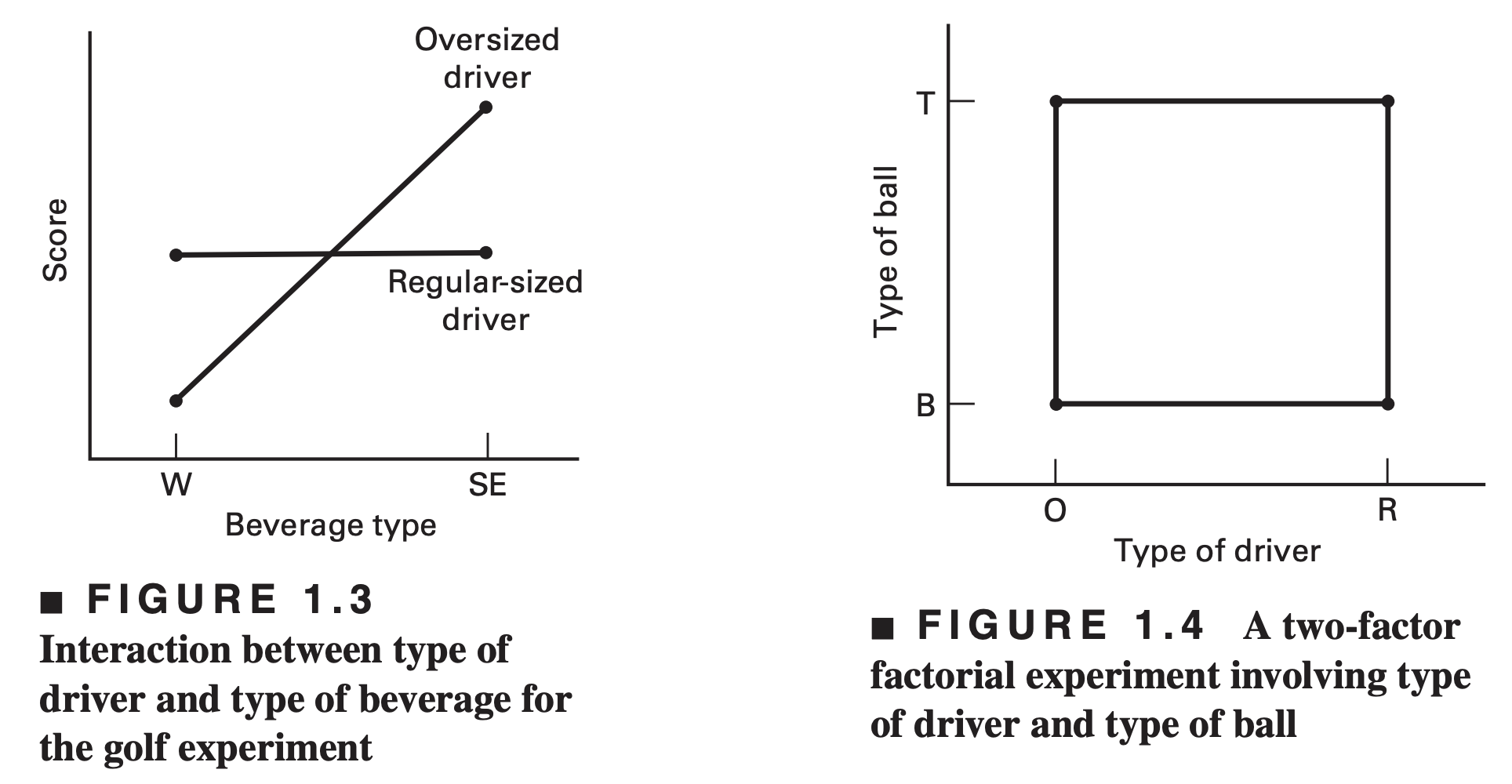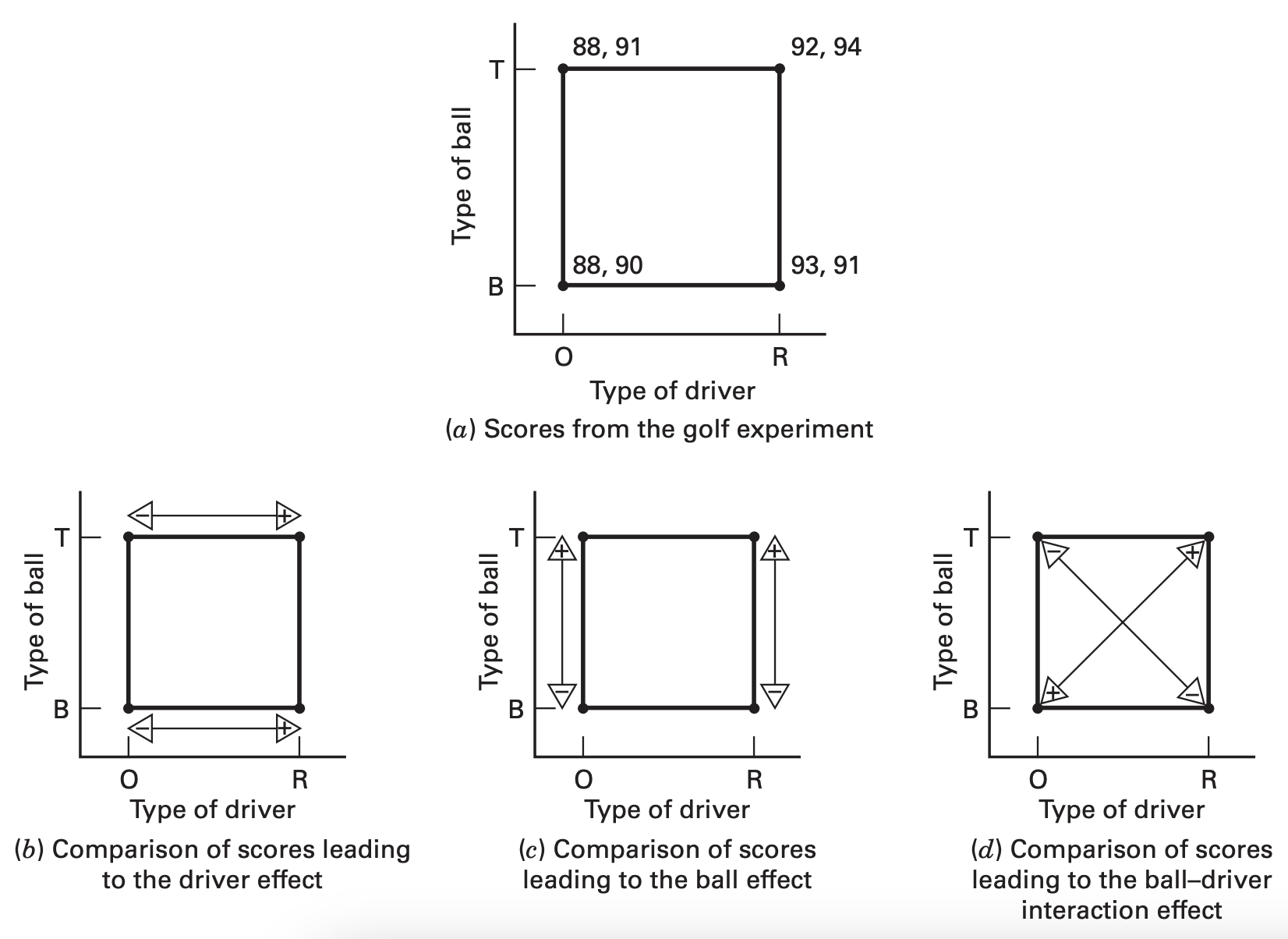1 Review
(AST301) Design and Analysis of Experiments II
1 Introduction
1.1 Strategy of Experimentation
Introduction to DOX
Investigators perform experiments to discover something about a particular process or system or to confirm previous experience or theory. Each experimental run is a test
An experiment is a test or series of tests in which purposeful changes are made to the input variables of a process or system so that we may observe and identify the reasons for changes that may be observed in the output response.
Design of Experiment (DOX) is a structured and organized way to conduct and analyze controlled tests for evaluating the factors that affect response variables.
In most practical problems, many variables influence the outcome of an experiment and they interact in very complex ways.
A good design allows for estimation and interpretation of these interactions.
Strategy of Experimentation

Experiments often involve several factors.
Usually, an objective of the experimenter is to determine the influence that these factors have on the output response of the system.
The general approach to planning and conducting the experiment is called the strategy of experimentation.
Example: Factors Affecting Golf Score
Factors that may affect a player’s golf score are as follows:
Type of driver used (oversize/ regular)
The type of ball used (balata/ three piece)
Walking and carying the golf clubs or riding in a golf cart
Drinking habit while playing (water/ beer)
Play time (morning/ afternoon)
Weather type (cool/ hot)
Shoe type (metal/ soft)
Day type (windy/ calm)
Best-guess approach
One approach would be to select an arbitrary combination of these factors, test them, and see what happens.
This approach could be continued almost indefinitely, switching the levels of one or two (or perhaps several) factors for the next test, based on the outcome of the current test.
This strategy of experimentation, which we call the best-guess approach, is frequently used in practice by engineers and scientists.
One-factor-at-a-time (OFAT) approach
The OFAT method consists of selecting a starting point, or baseline set of levels, for each factor, and then successively varying each factor over its range with the other factors held constant at the baseline level.
After all tests are performed, a series of graphs are usually constructed showing how the response variable is affected by varying each factor with all other factors held constant. The following figure shows a set of these graphs for the golf experiment.

- Disadvantage: This approach fails to consider any possible interaction between factors
Factorial experiment approach
The correct approach to dealing with several factors is to conduct a factorial experiment.
This is an experimental strategy in which factors are varied together, instead of one at a time.
To illustrate how a factorial experiment is conducted, consider the golf experiment and suppose that only two factors, type of driver and type of ball, are of interest.
Figure 1.4 shows a two-factor factorial experiment for studying the joint effects of these two factors on my golf score.

Calculation of the factor effects




1.2 Basic Principles of DOX
- Randomization
- both the allocation of the experimental material and the order in which the individual runs of the experiment are to be performed are randomly determined.
- Statistical methods require that the observations (or errors) be independently distributed random variables. Randomization usually makes this assumption valid
- Replication
- An independent repeat run of each factor combination
- Sample size improves precision of estimate
- Estimation of error (or background noise)
- Blocking
- Blocking is a design technique used to improve the precision with which comparisons among the factors of interest are made.
- Often blocking is used to reduce or eliminate the variability transmitted from nuisance factors
1.3 Guidelines for Designing an Experiment
Recognition of and statement of the problem
Selection of the response variable Planning
Choice of factors, levels, and ranges
Choice of experimental design
Performing the experiment
Statistical analysis of the data
Conclusions and recommendations